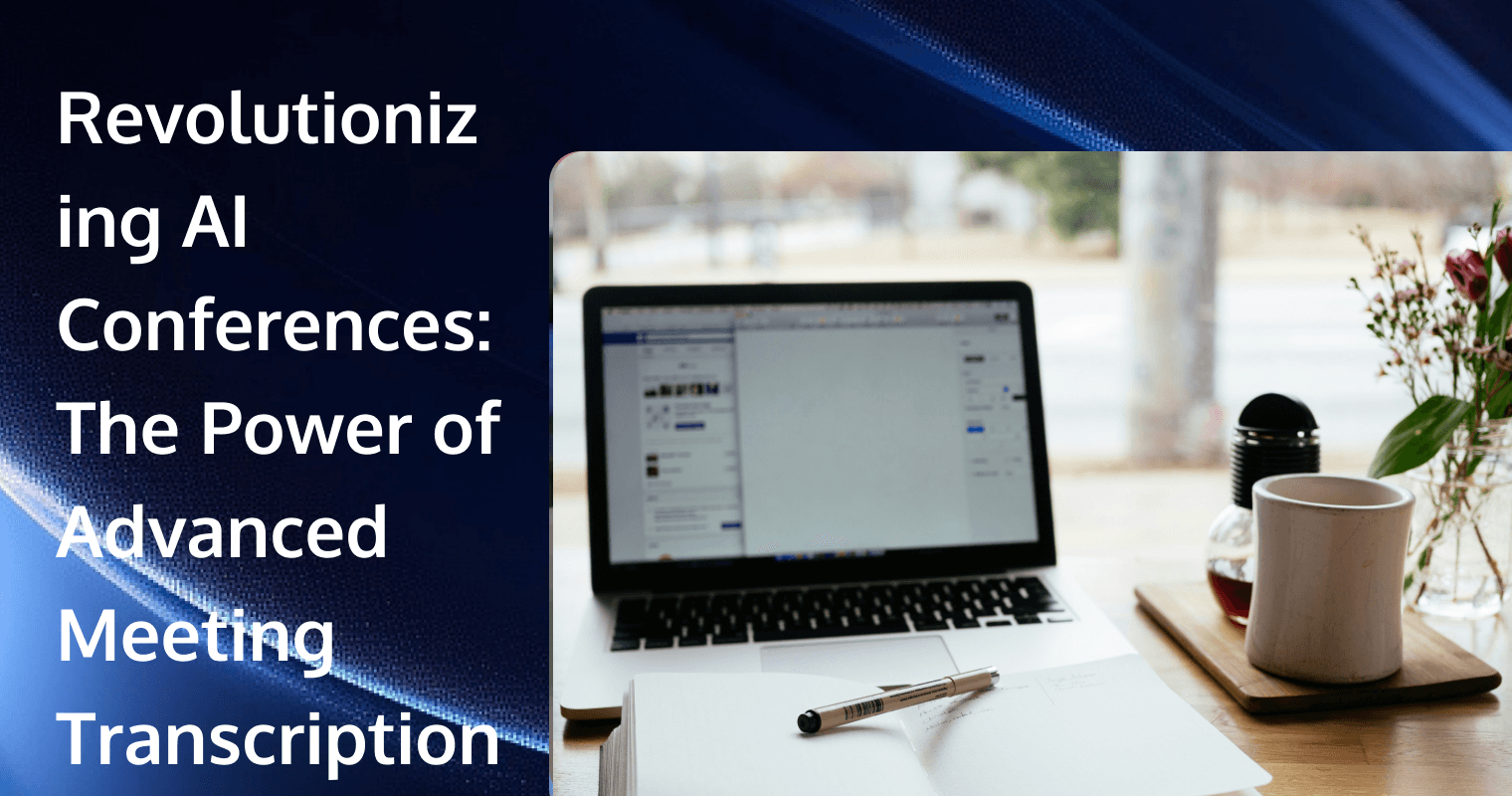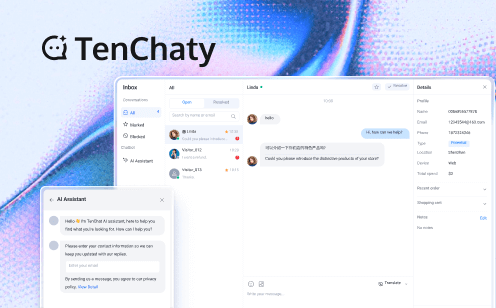
In the rapidly evolving landscape of artificial intelligence, AI conferences have become crucial hubs for knowledge exchange, innovation, and collaboration. These gatherings bring together the brightest minds in the field, showcasing cutting-edge research, groundbreaking applications, and visionary ideas that shape the future of technology. However, with the increasing complexity and volume of information shared at these events, a significant challenge has emerged: how to effectively capture, document, and disseminate this wealth of knowledge. Enter advanced meeting transcription – a powerful solution that is transforming the way we experience and leverage AI conferences.
Understanding Meeting Transcription in the Context of AI Conferences
Meeting transcription, at its core, is the process of converting spoken language into written text. In the context of AI conferences, this takes on a whole new level of importance and complexity. Traditional manual transcription methods, while once the standard, have become increasingly inadequate in keeping up with the pace and technical depth of modern AI discussions.
The evolution from manual to AI-powered transcription has been nothing short of revolutionary. AI-driven transcription systems can now handle the unique demands of AI conferences, including:
- Rapid, real-time conversion of speech to text
- Accurate capture of technical jargon and AI-specific terminology
- Handling multiple speakers in panel discussions and Q&A sessions
- Processing diverse accents and speaking styles from international participants
This evolution has made it possible to create accurate, comprehensive records of AI conferences that were previously unattainable.
The Role of AI in Modern Meeting Transcription
Ironically, it's artificial intelligence itself that has dramatically improved the transcription of AI conferences. The application of advanced machine learning algorithms and natural language processing (NLP) has led to significant enhancements in both accuracy and speed.
Speech recognition algorithms have become increasingly sophisticated, capable of distinguishing between speakers and accurately transcribing even in noisy environments. NLP techniques allow these systems to understand context, improving their ability to correctly transcribe technical terms and complex sentences often found in AI discussions.
Moreover, these AI-powered systems can learn and improve over time. By processing vast amounts of AI conference content, they continually refine their understanding of the field's terminology and speech patterns, leading to ever-improving accuracy.
Key Features of AI-Powered Meeting Transcription for AI Conferences
Advanced meeting transcription systems designed for AI conferences offer a range of powerful features:
Real-time Transcription: Instant conversion of speech to text, allowing attendees to follow along in real-time.
Multi-speaker Recognition: Ability to distinguish between different speakers, crucial for panel discussions and interactive sessions.
Technical Jargon Handling: Accurate transcription of complex AI terminology and acronyms.
Automatic Formatting: Intelligent punctuation, paragraph breaks, and formatting for readability.
Platform Integration: Seamless integration with conference management tools and virtual event platforms.
Multilingual Support: Real-time translation capabilities to support international audiences.
These features combine to create a powerful tool that enhances the overall conference experience for organizers, speakers, and attendees alike.
Benefits of AI Transcription for AI Conferences
The implementation of advanced meeting transcription in AI conferences brings numerous benefits:
Improved Accessibility: Real-time transcripts make content accessible to deaf or hard-of-hearing attendees, as well as those who prefer reading to listening.
Enhanced Knowledge Retention: Attendees can focus on engaging with the content rather than taking notes, knowing they'll have an accurate transcript later.
Facilitated Remote Participation: Transcripts enable remote attendees to follow along more easily, especially if dealing with poor audio quality or language barriers.
Streamlined Content Creation: Transcripts serve as a basis for creating conference proceedings, blog posts, and other derivative content.
Support for Multilingual Audiences: Real-time translation features can make conferences more accessible to international participants.
Improved Searchability: Digital transcripts create a searchable record of the conference, making it easy to find and reference specific information long after the event.
Challenges in Transcribing AI Conferences
Despite the advancements, transcribing AI conferences still presents unique challenges:
Complex Terminology: AI discussions often involve highly specialized vocabulary that general-purpose transcription systems may struggle with.
Accent Variety: Given the international nature of many AI conferences, systems must handle a wide range of accents and speaking styles.
Audio Quality Issues: Varying microphone quality and background noise can impact transcription accuracy.
Balancing Speed and Accuracy: The need for real-time transcription must be balanced with maintaining high accuracy.
Data Privacy and Security: With sensitive research often discussed, ensuring the confidentiality of transcripts is crucial.
Addressing these challenges requires ongoing development of AI transcription technologies and careful implementation strategies.
Best Practices for Implementing Meeting Transcription in AI Conferences
To maximize the benefits of AI transcription at conferences, consider the following best practices:
Prepare Speakers and Optimize Audio: Brief speakers on best practices for clear speech and ensure high-quality audio input.
Choose the Right Tool: Select a transcription solution that specializes in handling technical AI content.
Train on Domain-Specific Vocabulary: Provide the transcription system with relevant AI terminology to improve accuracy.
Integrate with Other Technologies: Combine transcription with slide sharing, video streaming, and other conference tools for a comprehensive digital experience.
Post-Process for Quality: Review and edit transcripts for any errors before distribution.
Ensure Data Protection: Implement robust security measures to protect sensitive information in transcripts.
The Future of Meeting Transcription in AI Conferences
As AI technology continues to advance, we can expect several exciting developments in conference transcription:
Enhanced Natural Language Understanding: Improved comprehension of context and nuance, leading to even more accurate transcriptions.
Integration with Extended Reality: As conferences explore VR and AR technologies, transcription services will adapt to these new mediums.
Automated Insights Generation: AI could analyze transcripts to generate summaries, extract key points, and identify trending topics.
Real-time Fact-Checking: Integration with knowledge bases to verify claims and provide additional context during presentations.
Advanced Analytics: Providing organizers with in-depth analysis of content, engagement, and attendee interests based on transcription data.
Case Studies: Successful Implementation of AI Transcription in Major AI Conferences
Several high-profile AI conferences have already successfully implemented advanced transcription systems:
NeurIPS (Conference on Neural Information Processing Systems): Implemented real-time transcription for all main track presentations, significantly improving accessibility and enabling better knowledge sharing among its global audience.
AI for Good Global Summit: Utilized multilingual transcription and translation services to facilitate international collaboration and idea exchange among participants from over 150 countries.
World AI Conference (WAIC): Employed advanced AI transcription to create a comprehensive, searchable database of all sessions, enhancing the long-term value of the conference content.
These examples demonstrate the transformative potential of advanced meeting transcription in various AI conference settings.
Choosing the Right Transcription Solution for AI Conferences
When selecting an AI transcription tool for your conference, consider the following factors:
- Accuracy rates, especially for technical AI vocabulary
- Real-time transcription capabilities
- Multilingual support
- Integration with your existing conference platforms
- Data security and privacy features
- Customization options for AI-specific needs
It's crucial to evaluate different solutions based on your specific conference requirements and to consider factors like the size of your event, the technical depth of the content, and the diversity of your audience.
Introducing TRTC for Advanced AI Conference Transcription
As we explore the landscape of meeting transcription solutions, it's worth highlighting an emerging player in this field: TRTC (Tencent Real-Time Communication). While primarily known for its robust video and audio communication capabilities, TRTC has been making significant strides in the realm of AI-powered transcription, particularly for technical conferences.
TRTC offers a comprehensive suite of features that address many of the unique challenges faced in AI conference transcription:
High Accuracy for Technical Content: TRTC's AI models have been trained on vast amounts of technical and scientific content, making them particularly adept at handling the specialized vocabulary common in AI conferences.
Real-time Processing: With low-latency capabilities, TRTC can provide near-instantaneous transcription, essential for live conference settings.
Multi-speaker Recognition: Advanced algorithms can differentiate between multiple speakers, even in rapid-fire panel discussions.
Seamless Integration: TRTC can be easily integrated with existing conference platforms and tools, providing a smooth experience for organizers and attendees alike.
Scalability: Designed to handle large-scale events, TRTC can manage transcription for multiple concurrent sessions without compromising on quality or speed.
Multilingual Support: With capabilities to transcribe and translate multiple languages, TRTC is well-suited for international AI conferences.
Strong Security Measures: Recognizing the sensitive nature of many AI discussions, TRTC implements robust encryption and data protection protocols.
The integration of TRTC into AI conferences can significantly enhance the overall experience, making content more accessible, searchable, and valuable long after the event has concluded. As AI conferences continue to evolve, solutions like TRTC are poised to play a crucial role in maximizing the impact and reach of these important gatherings.
Conclusion
Advanced meeting transcription is revolutionizing the landscape of AI conferences, offering unprecedented levels of accessibility, engagement, and knowledge retention. As we've explored, this technology brings numerous benefits, from improved accessibility to enhanced record-keeping and remote participation.
While challenges remain, ongoing advancements in AI are continually improving the accuracy, capabilities, and applications of transcription technology. The future of AI conferences will likely see even deeper integration of transcription services with other technologies, creating more immersive, accessible, and productive event experiences.
As we move forward, it's clear that AI-powered meeting transcription will play an increasingly vital role in maximizing the impact and reach of AI conferences. By adopting cutting-edge tools like TRTC, conference organizers can ensure they're providing the best possible experience for all attendees, whether they're participating in person or remotely.
In an era where knowledge sharing and collaboration are more important than ever, AI-powered meeting transcription stands as a powerful tool for democratizing access to information and fostering global scientific discourse. As we continue to push the boundaries of AI technology, we can look forward to even more innovative ways to capture, share, and leverage the valuable insights shared at AI conferences around the world. With solutions like TRTC leading the way, the future of AI conference transcription looks brighter than ever.


